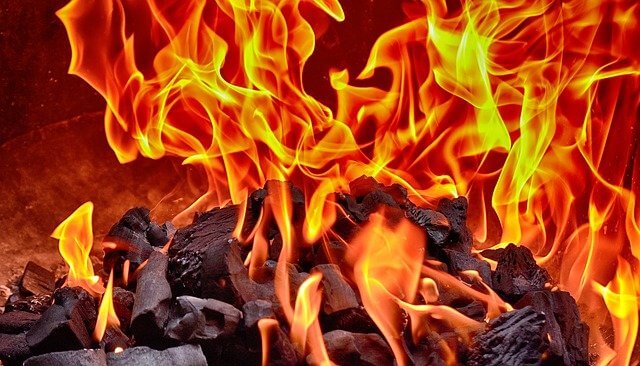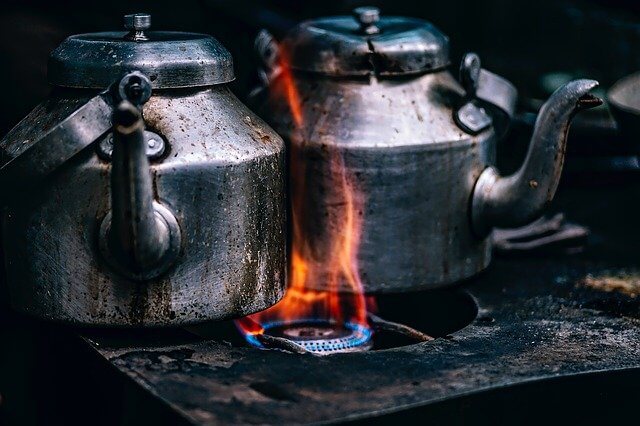How to measure heat? Activities and experiments to measure heat energy, materials needed and methods, explanation.

Source: pixabay.com
The words “temperature” and “heat” are often used as synonyms, Temperature is a measure of the degree of hotness or coldness and depends -upon the average kinetic energies cff the molecules in a body. The total heat in a body is equal to the sum of the kinetic energies of all of its molecules. It is reasonable to suppose that the heat in a body might be measured in units of kinetic energy. But it is impossible to measure the velocity and mass of molecules and thus the kinetic energies of the molecules.
To measure heat, the units calorie and kilo-calorie are used.
- A calorie is the amount of heat required to raise the temperature of 1g of water 1 ºC.
- A kilo-calorie is the amount of heat required to raise the temperature of 1 kg of water 1 °C.
- 1 Kcal = 1000 cal.
- The mechanical equivalent of heat can be expressed in joules.
- 1 cal = 4.2 joules.
- The amount of heat in a body depends on three factors: Its mass, initial temperature and kind.
ACTIVITY 1:
- Purpose : To show that heat in a body depends on its mass.
- Materials: Three beakers, two ther-mometersjvater, bunsen burner.
Method: 1) Take two empty beakers.
2) Put lOOcc of water into the first and 200cc of water into the second beaker.
3) Measure their initial temperatures. Are their initial temperatures the same?
4) Heat each ofthem Sepdrately until they reach 50 °C. How long does lOOcc ofwater take to reach 50 °C? Record the time it takes. How long does 200cc of water take to reach 50 °C?
5) Record this time also. Try to explain the reşults.
6) Take a small beaker and a large beaker.
7) Fiil both ofthem with boiling water.
8) Then let them çool. Which one gets cooler first? Why?
The amount of heat in a body depends on its mass.
ACTIVITY 2
- Purpose: To show that the heat in a body depends on its initial temperature.
- Materials: Hot water, cold water, two beakers two thermometers, bunsen burner.
Method:
1) Put lOOcc of hot water into beaker A and lOOcc of cold water into beaker B.
2) Measure the temperatures of the water in beakers A and B.
3) Heat both ofthem for 3 minutes, and then record their final temperatures. Which one reaches a higher temperature? Why?
The amount of heat in a body depends on its initial temperature.

Source : pixabay.com
ACTIVITY 3
- Purpose: To show that heat in a body depends on its kind.
- Materials : Two beakers, some oil, some water, two thermometers, bunsen burner.
Method :
1) Put equal amounts of water and oil into different beakers.
2) Note that their initial temperatures are the same.
3) Heat them separately for 3 minutes.
4) Record the final temperature ofeach. Which one has the higher final temperature ?
The amount of heat in a body depends on the substance it is made of.
ACTIVITY 4
- Purpose: To show heat capacity
- Materials : Three blocks of aluminum, iron and lead of 100 gr., four beakers, three thermometers, bunsen burner, water.
Method :
1) Take three blocks ofdifferent metals, aluminum, iron and lead, that all have the same mass, 100 gr.
2) First put them in a beaker of boiling water to heat them all to the same temperature.
3) Take three beakers, put lOOcc of cold luater into each one and measure their temperatures. Be sure that all are at the same temperature.
4) Then transfer each metal block from the boiling water into the cold water in each beaker.
5) Stir the mixtures, measure their temperatures again and compare them.
The temperature of the mixture of aluminum and water will be the highest and the temperature of the mixture of lead and water will be the lowest. This experiment shows that different materials absorb or give out different amounts of heat even though they have the same mass and undergo the same temperature change. Such objects are said to differ in heat capacity.
The heat capacity of an object is the quantity of heat needed to raise its temperature 1 °C.
The heat capacity of an object does not indicate much about the thermal properties of the matter of which it is made. For example, the heat capacity of 1 kg of iron also, differs from that of 1 kg of lead, but the heat capacity of 1 kg of iron also differs from that of 2 kg of iron. in order to obtain a quantity which has the characteristics of iron and lead, the heat capacities of equal masses of the metals must be compared. This comparison yields another quantity which is called specific heat.
The specific heat of a substance is a characteristic of the matter of which the substance is made.